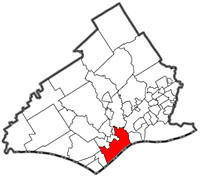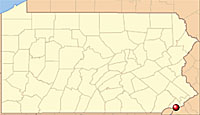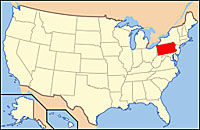Life’s necessities include food, water, and shelter, but when you drive through the streets of Chester you will find an overwhelming number of abandoned, boarded or missing houses. One or two row-houses may stand where it is obvious there was once a full block, an obvious illustration of the struggles facing Chester.
Homeownership is a defining part of the American dream, representing a benchmark of success for many. From 2005-2009, Pennsylvania maintained a 71.5% homeownership rate — the percentage of households occupied by their owners. At the same time, the homeownership rate in Chester was 40.1%.
The problem is addresses in Chester by the Chester Community Improvement Project, or CCIP in collaboration with the Chester Economic Development Authority, the Delaware County office of Housing and Community Development, PA DCED, and other local non-profit agencies.
To help make housing affordable the Chester Housing Authority, or CHA, has built many developments, including many built using Keystone Opportunity Zone support. These units are often targeted towards low to middle-income households.
Maintaining racially and socioeconomically diverse populations has been shown to have positive effects on a neighborhood. Segregation of neighborhoods oftentimes poses a problem.
Support also makes homeownership in Chester where the median household income is $24,978, about $6,000 above the federal poverty line, and the median value of owner-occupied housing units is $64,000.
Like many American cities, Chester has an array of affordable housing developments, which have improved over time. The Chester Housing Authority is currently assisting around 1500 families in the area. This assistance comes in the three main forms under the Housing Choice Voucher Program: Tenant-Based Rental Assistance, Project-Based Rental Assistance, and Home Ownership Option.
Waiting lists are extensive, and the list is closed for applying for rental assistance and section 8 vouchers is closed in Chester. This means that there are too many people struggling to secure housing because the influx of applications surpasses the supply.
The Chester Housing Authority maintains eight housing developments, including two which specifically serve senior citizens. Developments have as few as 10 units up to as many as 260. Many were built over the last 15 years or recently renovated, demonstrating a turnaround for the CHA.
In 1991, CHA residents brought forth and won a class action lawsuit claiming “constructive abandonment.” After this lawsuit, in 1997, Chester was removed from the United States Department of Housing and Urban Development’s, HUD’s, trouble list and was reclassified as a “standard performer.”
After this, the CHA was granted three HOPE VI grants. The HOPE VI program was intended to replace the nation’s worst public housing projects with mixed income communities designed to incorporate essentially calculable degrees of economic, racial, and other forms of diversity in a cooperative living environment.
Overall, Chester housing options have improved since the early 1990s and before, but there is still a very unbalanced amount of homeownership — and more assistance is still needed. The American system encourages homeownership in order that tax revenue can support other institutions, including things like education, and therefore the lack of homeownership expands its tentacles beyond just housing in Chester.
For information, read “Agents of Change: A chronicle of the collaborative efforts between Swarthmore College and the Chester Housing Authority during the last phase of the Receivership.”


